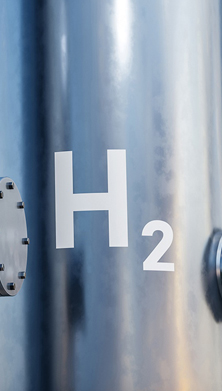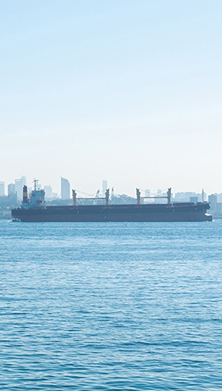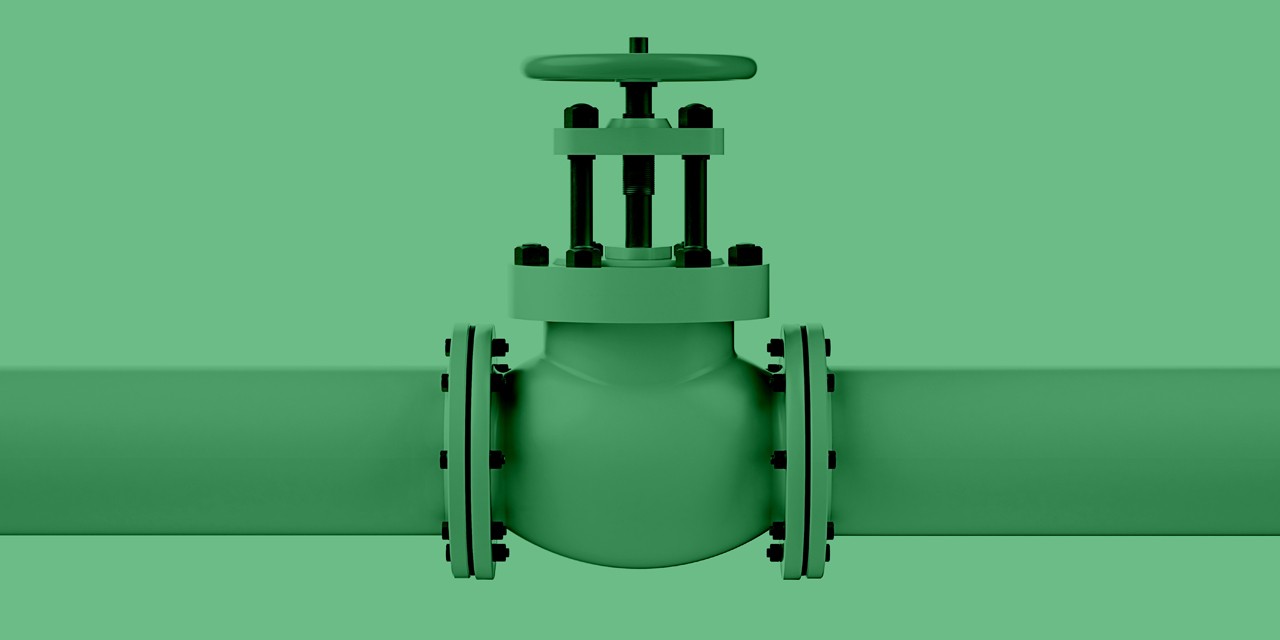This article is part of the
Global claims review 2022
Post-pandemic supply chain bottlenecks, higher energy and transportation costs, and shortages of labor were already contributing to higher inflation at the start of 2022. Now the war in Ukraine has further fueled global inflationary and supply chain pressures, causing price shocks for a wide range of commodities, including energy, food and construction materials. In June 2022, inflation in the euro area hit its highest annual level since the creation of the euro currency in 1999, jumping to a record [1]. In the US, consumer price inflation reached 9.1% – a , [2] while in the UK in May it was also at 9.1%, again [3].
The consequences of such sharp increases in inflation will also be felt across most lines of the insurance industry in the short- to mediumterm. Property and construction insurance claims, in particular, are exposed to higher inflation, as rebuilds and repairs are linked to the cost of materials and labor (claims in North America had already seen an inflation-driven claim cost increase in the upper single digits as of end 2021, prior to the Ukraine war), while shortages of materials and longer delivery times inflate business interruption values. Other lines of insurance, such as directors and officers, professional indemnity and general liability, are also susceptible to inflationary pressures through rising legal defense costs and higher settlements. Ultimately, inflation can bring pressure on claims severity from multiple angles.
Rotable and repair issues in aviation

The aviation industry (and consequently, aviation hull insurance) is also feeling the impact of inflation and supply chain disruptions. AGCS has a number of clients who are experiencing supply chain issues with their rotables – aircraft components that need to be rotated at frequent intervals. Fewer repair shops and less competition is further restricting supply.
With labor force shortages, what once would have been a repair situation can often turn into a replacement scenario. Delays in repairs and replacements can impact the size of the final claim. Another observable trend is the increased use of composite materials for new aircraft construction (versus aluminum/alloy) that further drives up the cost of repairs to such aircraft.
Rebuild costs soar
Supply chain disruption and rising prices are driving up replacement and rebuilding costs for property and construction claims. The cost of construction materials, including cement, timber and steel, have risen dramatically. Steel, for example, is almost 50% more expensive than it was a year ago, according to valuation company John Foord. [4] Construction inflation is around 11% to 25% in the US, UK and Germany.
“Inflation has accelerated in 2022 and is now at levels not seen in a generation. We have to keep a watchful eye on this issue, as a high inflationary environment leads to higher claims costs for property and construction in particular and brings additional challenges when adjusting claims,” says Scott Inglis, Head of Global Practice Group for Property and Business Interruption Claims at AGCS.
Inflationary and supply chain pressures are particularly acute during post catastrophe ‘demand surges’, where national or local resources are insufficient to meet demand for repairs and building materials following major storms and wildfires. For example, property damage claims from the December 2021 Colorado wildfires were inflated by a local surge in demand for building materials, already in short supply due to a post-pandemic rise in building works. Timber prices were almost triple their pre-pandemic prices. [5]
Supply disruption hits BI values
Global supply chain disruption, shipping delays and labor shortages are also impacting business interruption claims, with longer waiting periods for parts and materials.
Ongoing Covid-shutdowns in China, port congestion and shortages of truck drivers have increased delivery and repair times. Shipping cargo turnaround by major carriers has risen up to 60 days from the normal 50 days [6], which means 20% more containers were ‘in shipment’ than was the case in 2019, while 20% of the world’s 9,000 active container ships are currently sitting in traffic jams outside congested ports. In addition, the average time that containers offloaded from ships sit on docks has risen to over seven days compared to the pre-pandemic two-day average.
The global energy crisis, made worse by the Ukraine conflict, is also driving up costs and disrupting supply chains, with power outages in China and temporary production stoppages for energy- intensive products like fertilizer, paper and aluminum. The price of gas in Europe, for example, is five times a year ago, while the price of jet fuel is 120% higher. [7] The cost of shipping a container on the world’s transoceanic trade routes increased seven-fold in the 18 months following March 2020, while the cost of shipping bulk commodities spiked even more, according to the International Monetary Fund (IMF). [8]
Labor shortage adds to delays and costs
Tight labor markets are also driving increased claims severity for large claims. In what has been described as the ‘Great Resignation’, skilled and unskilled workers are in short supply as many have changed career or taken early retirement, just as demand soared after the pandemic. The American Trucking Association (ATA) [9] estimates that the US is short of 80,000 truck drivers. In the UK, job vacancies outpaced unemployment in the first quarter of 2022 for the first time on record.
Increased competition for workers and higher wages drives up repair costs, as well as the cost of defending legal claims. US legal services inflation is at 4% in 2022. [10]
Legal defense costs remain a key concern
Inflation is also a concern for liability claims, which are already experiencing rising defense costs and ‘social inflation’ in the US. Rising legal defense costs continue to inflate liability claims, including those for directors and officers, professional indemnity and products liability.
“US inflation has hit a 40-year high. We have yet to see this filter through, but it is likely to influence future D&O claims through larger settlements and higher pre-judgement interest rates. It could also further drive up defense costs, with higher salaries and hourly rates,” says Angela Sivilli, Co-Head of Global Practice Group for Commercial D&O and Financial Institutions Claims at AGCS.
Increased litigation costs, fueled by for-profit litigation funders, higher jury awards for personal injury claims and shifting societal attitudes, already continue to drive ‘social inflation’ in the US, contributing to higher severity general liability and workers compensation claims. The average size of large awards in the US rose by 26% for general liability cases between 2010 and 2019, according to Swiss Re. [11]
Inflation puts underinsurance in the spotlight
Insured values are a pressing concern for the insurance industry and will become a major discussion point with insureds in 2022, as high inflation raises the risk of underinsurance for companies and mis-declared values for insurers. Claims values and insured limits will likely be under increasing scrutiny.
“Underinsurance and undervaluation of insured assets will be a topic of growing importance through the course of 2022,” explains Philipp Cremer, Global Head of Claims Performance & Liaison at AGCS. In a high inflationary environment, it is important that businesses regularly monitor the value of assets, as well as the implications for the costs of replacement or business interruption, Cremer notes.
“Inflation is reaching levels not seen for four decades in some countries, driven by supply chain disruption, higher energy costs and changes in the workforce,” says Cremer. There are many macro-economic variables at play, compounding monetary inflation and leading to higher costs of claims for property and casualty insurance.”
If companies fail to maintain accurate valuations of assets, replacement values and business interruption exposures, the prospect of being underinsured becomes more likely. Low valuations of insured assets could lead businesses to purchase limits that fall below rising values or reinstatement costs.
Companies need to maintain accurate valuations of assets, replacement values and business interruption exposures
Accurate declared values are key
Therefore, the accuracy and timeliness of valuations provided by companies when obtaining insurance – known as the declared value – is crucial. In a high inflation environment, and with the growing complexity of large losses, insurers also risk underpricing exposures where they rely on declared values that do not truly reflect the reinstatement costs.
The insurance market has already seen a number of claims where there has been a significant gap between the insured’s declared value and the replacement value paid by insurers. For example, in a claim for a commercial property destroyed in the 2021 Colorado wildfires the rebuild value was almost twice the declared value, due to a combination of inflation, demand surge and underinsurance. Meanwhile, for a marine insurance claim, the actual vessel value was 50% higher than the declared value.
“Insurers have to make sure that we capture increased values at the point of pricing. During the prolonged soft market, clauses that historically were in place to deter under-declared values were taken out of the policy, shifting the risk of underinsurance to the insurer. There is now discussion in the market as to whether this should be brought back into wordings if asset values are not updated,” says Cremer.
“AGCS will be working together with clients and brokers in the run up to renewals to update asset values and ensure clients have appropriate cover that is fit for purpose, understood and appropriately priced and financially monitored in our portfolio. Nobody wants a dispute about underinsurance after the loss. It’s much better for all parties to get the right value and charge the right premium in the first place,” says Cremer.
References
[1] Eurostat, Annual inflation up to 8.1% in the euro area,, June 17, 2022
[2] Bloomberg, US Inflation Quickens to 40‑Year High, Pressuring Fed and Biden, June 10, 2022
[3] The Guardian, UK inflation rises to 9.1%, its highest rate in 40 years, June 22, 2022
[4] John Foord, Inflation and its impact on reinstatement cost, April 22, 2022
[5] Insurance Journal, AM Best says demand surge and inflation to amplify Colorado wildfire losses, January 12, 202
[6] Reuters, Hapag‑Lloyd CEO says shipping still in the thick of supply chain disruptions, September 30, 202
[7] International Air Transport Association, Jet Fuel Price Monitor
[8] International Monetary Fund, How soaring shipping costs raise prices around the world, March 28, 202
[9] BBC, How will the US deal with a shortage of 80,000 truckers? November 8, 2021
[10] Legal services price inflation since 1986
[11] Swiss Re, US litigation funding and social inflation: the rising costs of legal liability
Pictures: AdobeStock
Newsletter
Keep up to date on all news and insights from AGCS
















